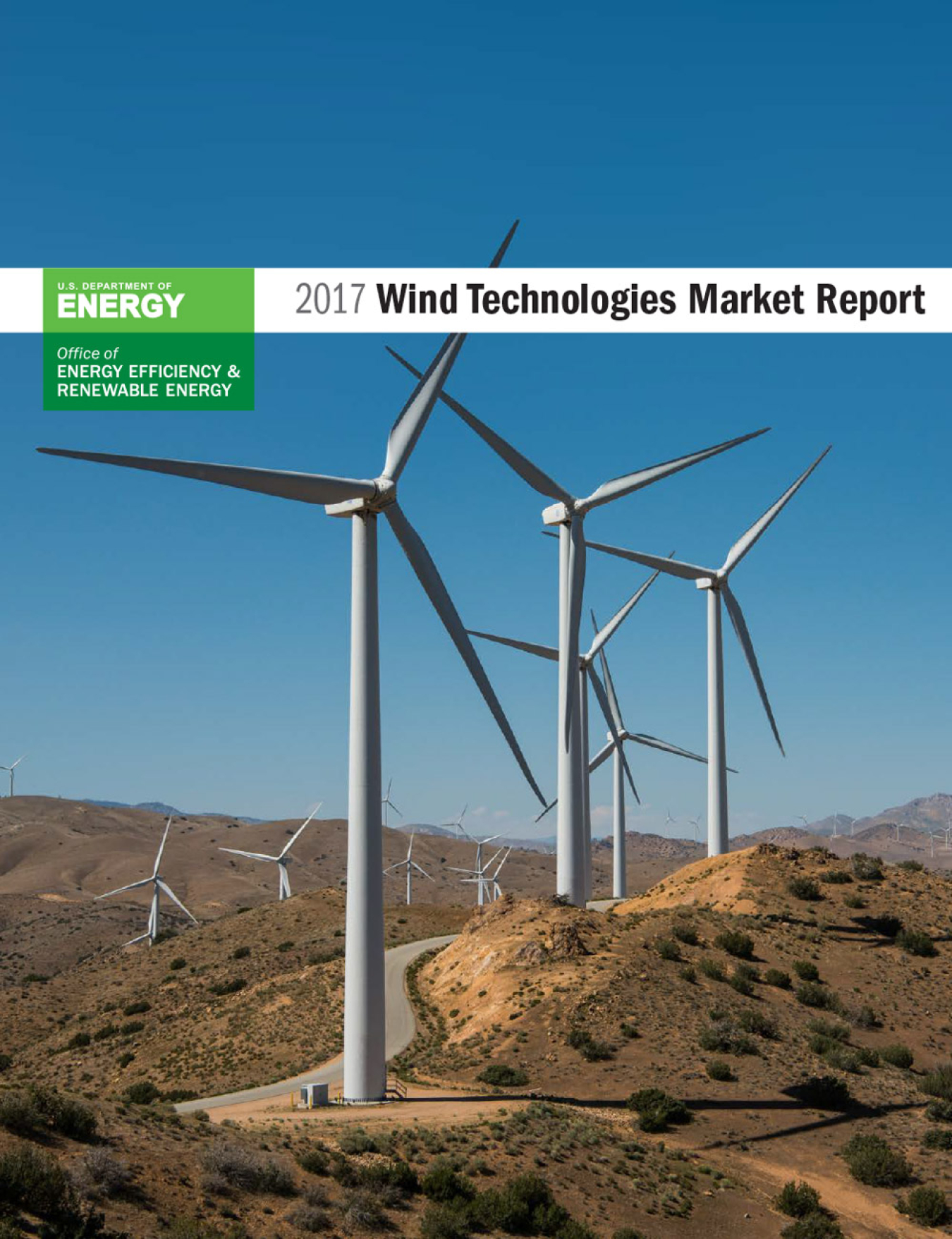The 2017 Wind Technologies Market Report summarizes the major trends in the U.S. wind power market in 2017.
Wind Energy Technologies Office
July 20, 2018
The 2017 Wind Technologies Market Report summarizes the major trends in the U.S. wind power market in 2017.
Key findings of the report include:
- Nationwide, wind power capacity additions equaled 7,017 MW in 2017, with $11 billion invested in new plants. Wind energy contributed 6.3% of the nation's electricity supply, more than 10% of total electricity generation in fourteen states, and more than 30% in four of those states.
- Increased rotor diameters have begun to dramatically increase wind project capacity factors. The average generating capacity of newly installed wind turbines in the United States in 2017 was 2.32 MW, up 8% from the previous year and 224% since 1998–1999.
- Wind turbine equipment prices have fallen from their highs in 2008 to $800–$950/kilowatt (kW), and these declines are pushing down project-level costs. The average installed cost of wind projects in 2017 was $1,611 per kilowatt (kW), down 33% from the peak in 2009-2010.
- After topping out at 7¢/kWh in 2009, the average levelized long-term price from wind power sales agreements has dropped to around 2¢/kWh—though this nationwide average is dominated by projects that hail from the lowest-priced region, in the central United States.
- Wind sector employment reached a new high of 105,500 full-time workers.
- With federal tax incentives still available, various forecasts for the domestic market show expected wind power capacity additions of 8,000 to 11,000 MW/year from 2018 to 2020, with market contraction anticipated beginning in 2021 as those tax incentives are phased out.
For more data from this report, see the 2017 Wind Technologies Market Report data visualizations from Lawrence Berkeley National Laboratory on installations, specific power, performance, and prices.

